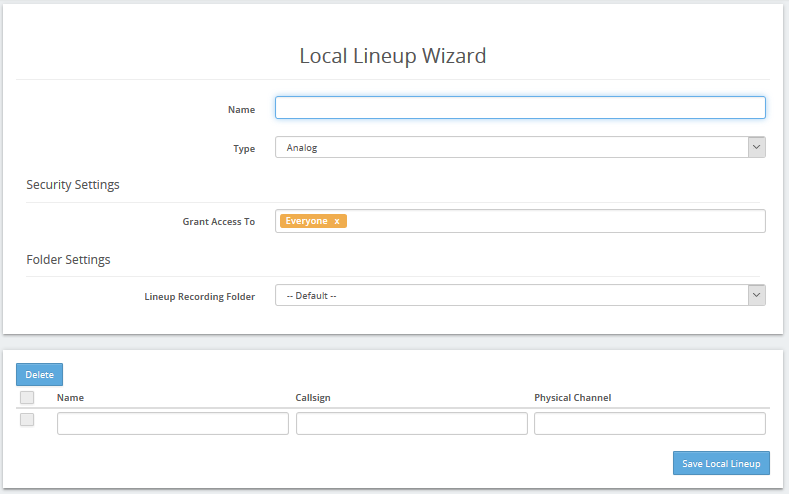|
Creating a Local Lineup To begin, click Create New Local Lineup from the Program Guide settings page. Enter a Name and select the lineup Type. SnapStream supports Analog, ATSC (digital antenna), QAM (digital over RF cable), DVB-T, and IPTV lineups.
To add a new channel, enter a Name, Callsign, and Physical Channel.
When you are done, click Return.
Channel mapping differs between the three types of digital lineups. The correct settings for your channels should be available from your cable provider. ATSC
For an ATSC channel, the Major Channel and the Minor Channel are logical tuning information for receiving the specific program after the physical channel is recorded. The Physical Channel determines the frequency of the channel. QAM
When setting up a QAM channel, the QAM Type and Physical Channel determine the frequency of the channel. The Program Number is used to differentiate between multiple streams that are part of a single physical channel. The Guide Channel is an arbitrary setting that determines only where the channel will appear in the Program Guide. DVB-T For DVB-T, the Carrier Frequency specifies where the channel is on the signal, specified in kilohertz. For example, 567.000MHZ should be entered as "567000." Bandwidth is also in KHZ and is defined by the TV provider. This number is usually in the range of 6-8mhz, which would be entered as 6000-8000. The Program Number is used to differentiate between multiple streams that are part of a single physical channel. The Guide Channel is an arbitrary setting that determines only where the channel will appear in the Program Guide.
IPTV For IPTV, the IP Address or DNS Name designates the source of the channel, along with the Port. For some cases, the Source Address may specify the source of the stream. |





